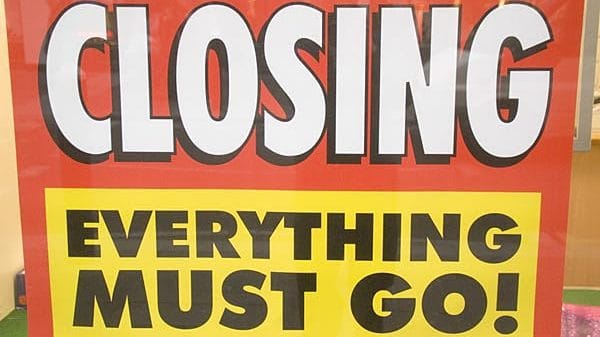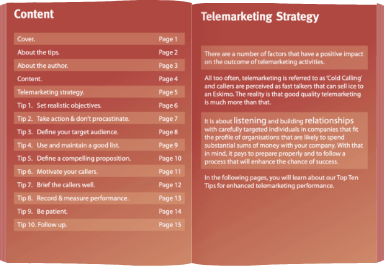In b2b sales not much happens unless the sales person is able to close the business. Sales is a process that starts before the initial engagement and should continue well past the initial meeting or call. Nowadays, it’s much more about consultative selling rather than overt ‘selling’ but a good sales person needs to understand the elements that enhance the likelihood of getting to the point where a close is possible. Below, we’ve detailed a few pointers and our Top 10 Tips to Close More Business that can assist in those efforts.
The tips below are only high level guidance. One size most definitely doesn’t fit all. So consider your own situation and the type of businesses you sell to. It is intended as a pointer. For more information on our telemarketing and sales training courses, please click here.
1. Prepare – Don’t just collect flat information before a sales meeting. What can you find out about the company culture and values and the style and needs of the person you’re meeting? People still buy from people they like and with whom they can build rapport. They don’t care about you or your products but how what you’re offering fits with their needs and perspective, resolves their issues and enhances their position. Check out their website thoroughly. Visit their store. Call some of their customers if possible. Call in advance if you feel you haven’t got enough information other than company standard info. Speak to someone even if it isn’t the person you’re meeting. Learn more about them e.g. find out if you can if the person is a detail or high level person.
2. Perceive – Take in every available cue from your environment. How does the company describe itself on its website? Where is the company located? What is the building like? How is the receptionist? How long do you have to wait? Is it comfortable? What kind of room do you meet in? How does the prospect greet you? What does he / she say? There are many verbal and non verbal clues to help you in your meeting and of course beforehand. Get a sense of how they like to be communicated to. How are they dressed? Observe body language and listen carefully to what they say.
3. Personal impact – Research shows that only 7% of our meaning is conveyed through the words we use. 93% of communication is non-verbal through body language and tone of voice. A high percentage of sales are still based upon liking the sales person. People like people who they perceive to be like them. Establishing rapport with your customer is a basic building block to creating a long-lasting and mutually beneficial relationship. Are you are minimising the differences and emphasising the similarities between you. This will help to establish a perceived likeness and the customer will feel more at ease. Try to match up as far as possible. Check in advance if possible what the dress code is.
Consider how your customer varies the tone of their voice and their key words and phrases. How are they sitting? Can you match their posture? Observe early on what is going on around you during the meeting. Listen carefully to words used and use them too. Don’t jump into a business conversation too soon. Find some common ground (the weather, holiday…). Establish rapport but make it real not contrived. Think about how you introduce yourself, your business and your services. Practise and be positive. And remember, it’s not what you say, but HOW you say it.
4. Questioning – Ask your customers what they want. Find out what is really important to them. It is more difficult for someone to disagree with you if you can demonstrate that you have their interests in mind. Identifying what their problems and opportunities are and what they want to see from you is crucial. Don’t assume you know. Don’t trot out your stock credentials presentation that will bore them with death by PowerPoint. Ask what it is they’d like from you (and listen to how they say it as well as what they say) and how long they’d like the meeting to take. Ask relevant questions about why they are considering using your services. What issues do they have? What would they most like to solve or develop?
If there was one thing they could change about the current situation / supplier, what would it be? What is it that they’re looking to buy? How does the process work currently? What do we have to do for you to purchase? Use good questions: Specifics: Where – Location, Which – Choice, When – Time, Who – Person. Probing and shaping: How – Method / process / structure, What – Outcome / specific data, Why – Emotion / excuses / reasons / justification
5. Listening – There are so many opportunities to listen to what the answers are. Make notes if necessary. Check understanding and reframe their answers if necessary to ensure you and they fully understand. Probe for more information if you perceive any gaps but don’t outstay your welcome with so many questions that they learn absolutely nothing about the reason you came to see them. Be genuinely interested in understanding your customers and their needs as opposed to trying to make them understand the value of your product or services. Listen actively and don’t spend time trying to frame your next question while they’re talking.
6. Influential language – Use positive and assertive language. Confirm what you will do for them. Use language that supports the sales process. Encourage them to consider how it would be when their sales have increased or their productivity is enhanced.
7. Flexible approach – Until you get there, you don’t know what is going to happen. Things that could throw you off course could be the room, the prospect’s mood, time available, technology set-up, the style of person they are and what they respond to. So don’t be rigid. Be flexible. Consider having a short PowerPoint presentation (not my favourite) but also think about alternative options if this isn’t relevant. Test your pitch. Avoiding one size fits all. Check with your prospect what it is they want to see and how long they’d like it to last. And stick to it unless they tell you otherwise.
8. Outcome led conclusions (next steps) – What is your and their expectation at the end of the meeting? Will the sale be concluded in one meeting? What supplementary info do they need? And in what format (full proposal, tender, pitch, bullet point, email)? Agree next steps and secure a follow-up meeting if necessary. Qualify the prospect out if you don’t want to do business with them or if it feels to you that they are not interested. Challenge them and ask them clearly if what you’re offering is relevant and appropriate. Fix next steps
9. Follow-up – Make sure you do what you promised at the time you promised. You are guaranteed to fail if you don’t deliver what you said. Keep following up by phone if necessary at the agreed time (assuming a sales conclusion isn’t immediately forthcoming). Continue to build rapport and gather info during each subsequent conversation. Record your notes for use in the next call or meeting. Give them the opportunity to tell you they don’t want any further contact. Ask them when is a good time to follow up and make sure you do. Ask for the business! There are so many theories and techniques on specific closing that it isn’t necessary to cover them here. It is far too big a subject. Do what works for you, practise and change if the ratios aren’t working for you.
10. Contact strategy – There’s no need to flog a dead horse but most sales come as the result of several sales calls and over a reasonable period of time. Pipeline is crucial as you become too desperate if you are waiting on a few sales to come in. Most sales people give up far too soon. Ensure you have a robust enough pipeline to mean that you are not reliant on one prospect crawling over the finish line. It takes the pressure off. Keep communicating with them (newsletters periodic emails, calls, invitations to events etc). Devise a contact strategy for prospects and lapsed customers that keeps the door open and makes it more likely that one or more of your prospects will convert to sales on a regular basis.
Contact us now on 0845 658 8192 to find out how you can generate more business.






